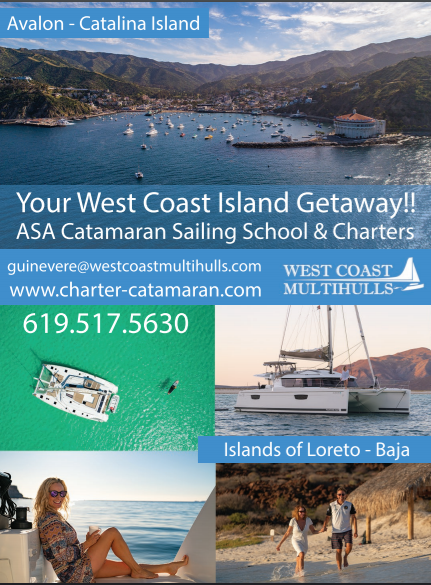
Francis Joyon Breaks His Own Mauritius Record
Francis Joyon has just beaten his own record, set 10 years ago. This stretch of the Route to the Indies is called the Mauritius Route, or, in French, La Mauricienne. Joyon covered the course in 19 days, 18 hours, 14 minutes and 45 seconds, an improvement of 6 days, 10 hours. The Mauritius Route started from Port Louis in Brittany, France. The course took Joyon up the Indian Ocean with all its difficulties to another Port Louis, the capital of Mauritius.
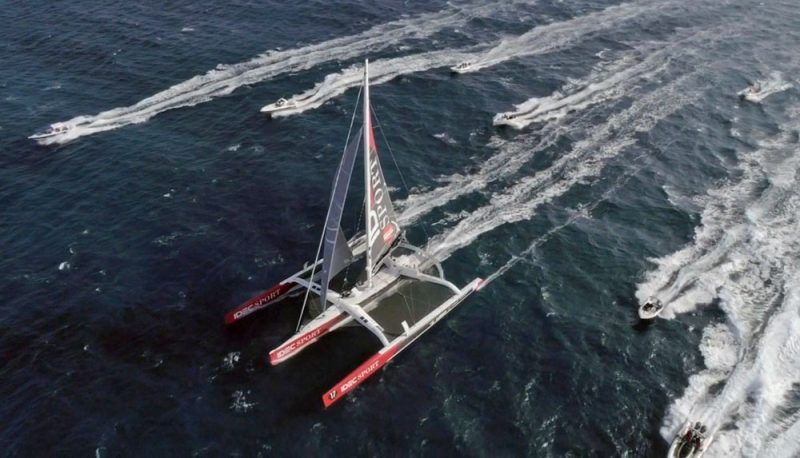
The theoretical distance is 8,950 miles, but Francis sailed almost 11,000 miles, averaging 23.2 knots. IDEC Sport arrived in perfect condition. This achievement will allow Joyon to respect the demanding schedule of his Asian Tour.
“For this record, I had two things weighing on my mind,” he said at the finish. “There was the pressure of getting a good result, as usual when you are racing against the clock. I didn’t have the pressure on me from rivals like I did in the Route du Rhum, but I needed to keep to schedule for what lies ahead in the Asian Tour, which will take us to Vietnam and then China. I didn’t want to mess that up by arriving here behind schedule.” Joyon won the last Route du Rhum and holds the Jules Verne trophy for the fastest circumnavigation.
At the start on October 19, “Our weather opportunity was far from ideal. As was later confirmed, there was nothing really interesting coming up in the next few days or weeks. We needed to get going in order to stick to the schedule for the Asian sailing program.”
The St. Helena High stretched out to the coast of Brazil, presenting a huge challenge. The southeasterly trade winds propelled IDEC Sport west on a long detour of the calms blocking the path in the middle of the South Atlantic. The maxi-trimaran headed southwest a long way from the direct route, losing some time. On the 11th day of sailing, Joyon was as much as 27 miles behind the pace he’d set in his earlier IDEC boat, which had been able to trace a decent arc across the South Atlantic in 2009.
Next up on the Asian Tour is a crewed attempt at the Mauritius to Ho Chi Minh City course record. For more info, see www.idecsport.com/en/idec-sport-asian-tour.
West Coastal Cruise Weather Planning, Part 1
Where do you get your weather information for coastal cruising? My partner and I recently took a two-week cruise from Berkeley to the Channel Islands and back on our Kelly Peterson 46 Esprit. We had a couple of different major sources for our forecast and planning. We used PredictWind, Windy.com, SailFlow.com, and Weather Routing Inc. But I’m interested to hear what you’re using.
I’m going to break this up into two experiences using our various options. The trip south was entirely planned using the free, web-based options. We’d have no access to data once offshore.
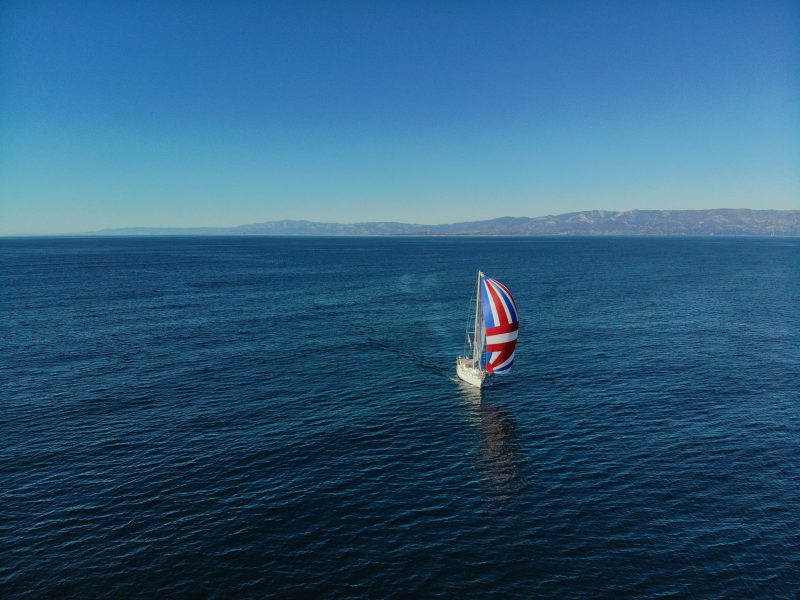
I’m always looking at the weather forecasts as far out as they’ll predict, and for this trip, we planned to leave on Fleet Week weekend. (We did get a great day of watching the show on anchor in Richardson Bay.) Once we departed, the options for sailing were looking slim unless we went at least 30 to 50 miles offshore. Out there, we were expecting winds between 12-20 kts for the two to three days it would take us to get to Santa Rosa Island, our first planned landfall. PredictWind has a cool split-screen tool where you can compare two different visual forecasts side by side.
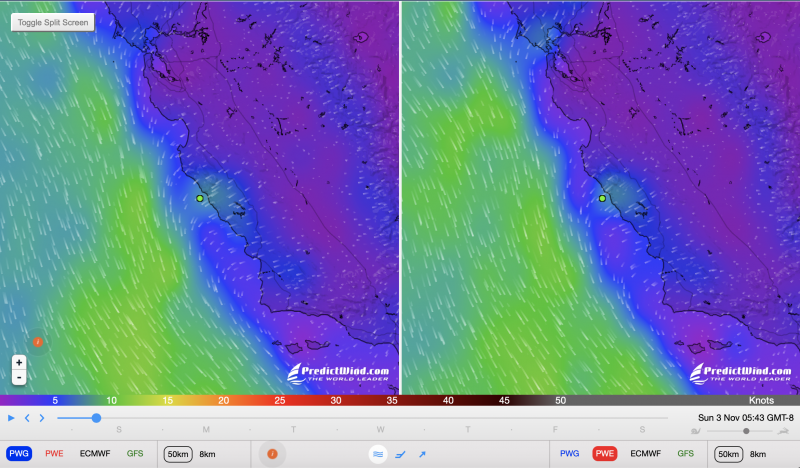
You do need to create a log-in, where they’ll try their hardest to get you to buy a subscription, but the free option is great for the level of information we needed. Both the GFS and ECMWF — and the PW computerized interpretations of each (that’s four forecasts) — showed light winds inshore and great sailing offshore. Windy showed the same, but less wind on average. SailFlow is great when looking at live wind and gusts (with the paid version) but we wouldn’t have access to that offshore anyway.
Early on a foggy Sunday morning, we motored out the Gate and to the Farallon Islands where the northerly started to fill in. The farther west southwest we went — as predicted — the better the conditions became. Just before sunset, we poled out the genoa and sailed wing on wing, jibing about every 12 hours until we could jibe for a straight shot past Conception and into Bechers Bay on Santa Rosa Island. The weather and routing paid off as planned and held accurate for the 53-hour and 325-nm passage.
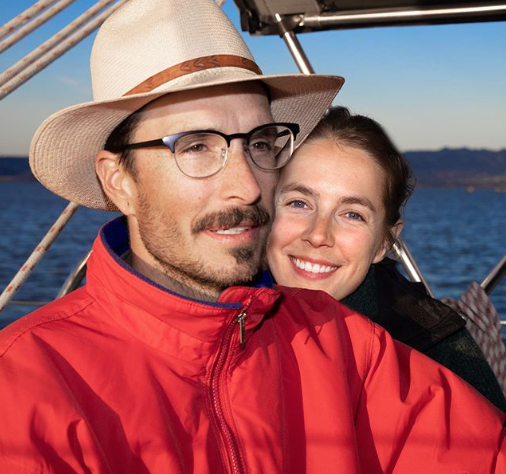
Unfortunately, that pass into the islands was cut short by a VHF weather forecast proclaiming a Santa Ana (aka the ‘Devil Wind’ of the islands) was going to get started in less than 36 hours. We spent the night anchored in the huge bay with one fishing boat and one other sailboat. The next morning we sailed out of Bechers and set the asymmetrical chute for Santa Barbara. As cell data became available, we checked our apps to compare the VHF forecast; there was a prediction for sustained winds in the 30s with gusts to 45 kts for a few days!
Once in Santa Barbara we kept an eye on all the options so we could make another dash for the islands after we switched out our crew. I also found a coupon from the Pacific Sail and Powerboat Show for 15 days of free premium service from Weather Routing Inc. — this is a team of meteorologists that offer customized ship and yacht weather routing. “Yahoo!” I thought, as I feared the trip north far more than I did the trip south.
Readers — We’ll run part 2 of Mitchell Andrus’ story next week, but in the meantime, if you have a favorite weather-forecasting service, please let us know. You can either comment below, or email us here.
Charter a West Coast Multihulls Catamaran
Baja Ha-Ha sponsor West Coast Multihulls invites you to charter aboard their fleet of catamarans sailing out of Puerto Escondido in the beautiful Sea of Cortez.
Maiden Departs California to Continue World Tour
Maiden bids farewell to California today, departing from San Diego. “Maiden will sail directly to the Panama Canal and then on to Antigua without any other stops,” advises the Maiden Factor’s Libby Mudditt.
“When planning the route to leave L.A. on schedule there were too many possible hurricane/cyclone activities without the possibility of suitable safe havens,” explained Mudditt. “It was decided to wait it out and see what developed. However, with the unrest in Chile, we could not wait any longer, otherwise it would impact on all future dates for the world tour. We made the difficult decision to cancel the stopovers in Chile and Uruguay and reschedule later in the world tour if possible.”
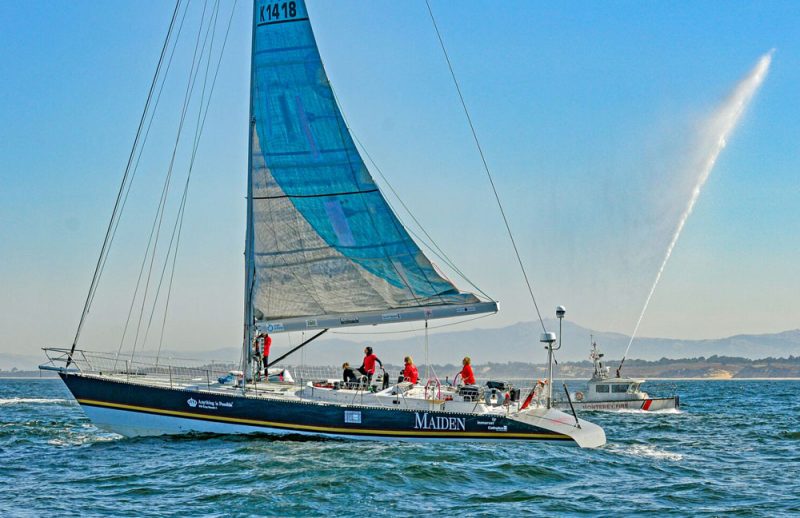
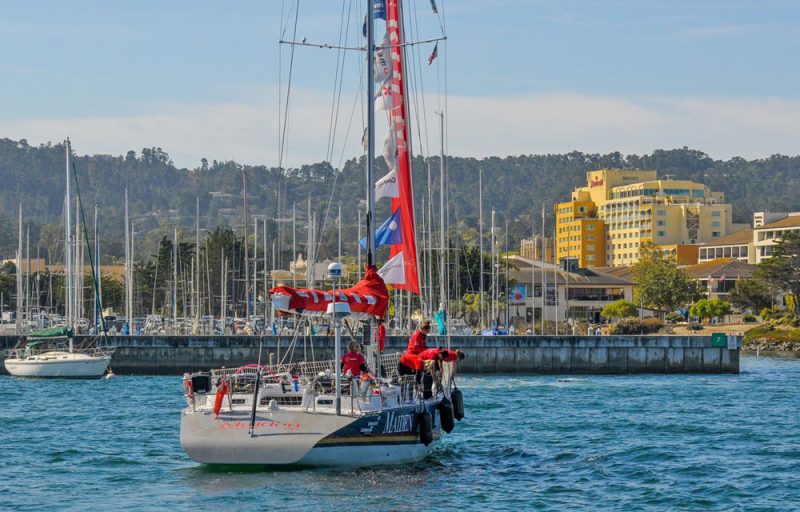
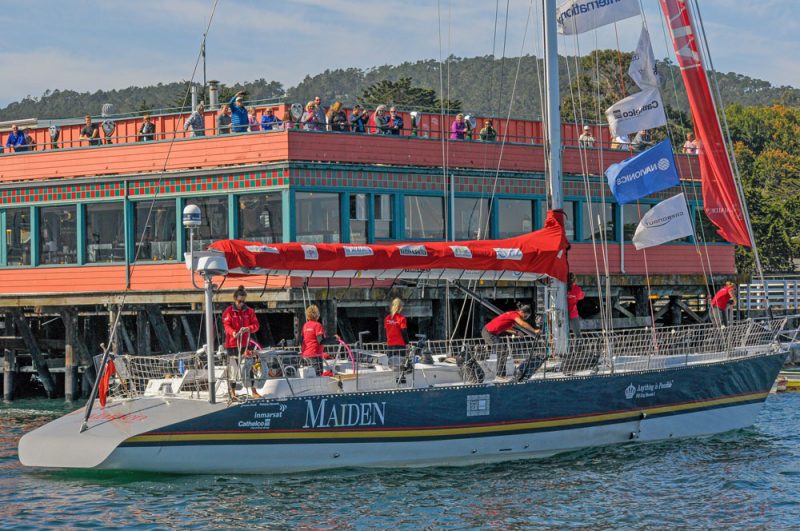
Taking over from Aussie Wendy Tuck as captain for the 4,000-plus-mile voyage to Antigua is Liz Whardley. Raised in Papua New Guinea, Whardley has three Volvo Ocean Races on her résumé, starting at age 20. She was named Papua New Guinean Sportswoman of the Year in 1999 and 2000. She’ll turn 40 on December 6, during the trip. In an interview with Scuttlebutt, she told Craig Leweck that she worries what the crew will do to her!
In case you’ve been shipwrecked on a desert island for the past few months, Maiden is the 58-ft yacht that Englishwoman Tracy Edwards sailed with the first all-female crew in the 1989-90 Whitbread Around the World Race (now known as the Ocean Race). The boat was later found rotting in the Seychelles. Edwards brought her back to the UK for an extensive refit.
And the Maiden Factor is a new mission to raise awareness for girls’ education around the globe. Maiden is on a two-and-a-half-year, 60,000-mile circumnavigation with 30 ports of call. She left the UK last November and has so far visited Sri Lanka, Australia, Honolulu, the Pacific Northwest and California. American crew members include Courtney Koos and Erica Lush. Check out their blog here.
A documentary about Maiden’s Whitbread caused quite a sensation in the Bay Area when it was released in July. Our readers gave the movie an enthusiastic thumbs up.
“Why I Sail,” by Webb Chiles
In this month’s Sightings, Webb Chiles attempts to answer the answerable. Don’t forget that Chiles still regularly posts on his website, which can be found here.
“Those who dance are thought mad by those who cannot hear the music.”
I first came across that expression a few months ago in the opening credits of a movie about mountains and partially about mountain climbing. I have since learned that it is well known and attributed to various sources. The words echo what I have observed in my own life and called the dog- whistle effect. There are those, perhaps many, who simply cannot comprehend my life, just as we cannot hear sounds that dogs can. I have learned that people understand my life and why I sail almost instinctively or they do not and never will, which is one reason I generally deflect the question, “Why do I make my voyages?” Another is that, as a long-ago philosophy major, I came to the conclusion that as a species we have evolved to be fairly good at figuring out “how” — at least some of us have — but not at answering “why?” Western philosophy can be summed up in four words: Good questions. Bad answers.
So when a man in the audience at a recent talk I gave at the Richmond Yacht Club said, “And now for the big question: Why?” I did not attempt to provide an answer. Some, including a Latitude 38 editor who was in the audience that night, subsequently expressed regret that I did not and offered me the opportunity to do so here. Thus I find myself attempting to answer a question I consider unanswerable. This is partially self-serving. I figure that if I write this out now, after it appears in Latitude, I can post it on my website and in the future simply refer anyone who asks the question to the site and never have to answer it again.
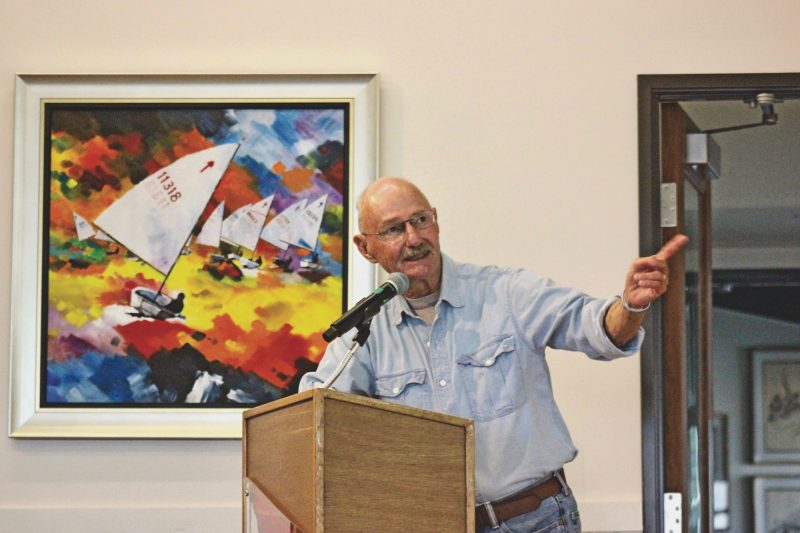
The question actually has two components: “Why do I go to the edge of human experience?” and, “Why do I sail?” For I could have gone to the edge in other ways.
The very first words of my first book about my first circumnavigation are: “I was born for this moment and all the days ahead.” I believe them to be true, so the most fundamental answer to “why” is that I was born to.
I believe that to survive, our species needs most members to be stable workers and responsible parents, but it also needs to spin off a few who are original experiments destined to explore and expand the edges of human experience. From childhood I have believed I am one of those original experiments, even though aware, as I wrote decades ago, that most original experiments are failures. Whether I have been a successful or failed experiment remains uncertain.
At least partially jokingly, I recently declared myself a success when I learned that one of my aphorisms, “Live passionately even if it kills you, because something is going to kill you anyway,” now appears on tea bag labels, joining my better-known, “A sailor is an artist whose medium is the wind,” which has been used without royalties on T-shirts, coffee cups, paintings, photographs, and even an ad for women’s shoes. What other sailor do you know whose words are so widely stolen? What other writer?
If one accepts that I am an original, and a fair number of people have come to that conclusion over the years, then one could reasonably ask, but why sailing? This is easier to answer.
I was born in Saint Louis, Missouri, and raised in a suburb of that city about as far from the ocean as you can get. I was not close to my mother and stepfather and wanted to be as far away from Saint Louis as I could get, so I was overjoyed when in my early teens my grandparents, my father’s mother and her last husband, to whom I was close, retired to a small house three in from the ocean at San Diego’s Mission Beach. I spent my high school summers with them, and those summers probably saved my life. I was over the seawall and on the beach and in the ocean from morning to night. I saw sailboats pass. I had never sailed. I knew no one who sailed. Sitting there I told myself that one day I would, and obviously I have.
Another teenage moment: I am at a movie theater in Kirkwood, Missouri, watching the mostly forgettable Fire Down Below, starring Rita Hayworth, Jack Lemmon, and Robert Mitchum. There is a scene in which Hayworth goes to the bow of a sailboat anchored just off a white-sand tropical beach and dives gracefully into blue water to swim ashore. A lonely boy, I told myself that someday I would have a boat like that and sail with a woman like that to an island like that. And I have. Many times. It has not all been an ordeal.
I was an only child and it took. A perfect upbringing for a solo sailor. I am not meant to be a team player. I have almost never sailed with anyone except a few of the women in my life. I have written about entering the monastery of the sea, and though I am a much-married monk, I cherish solitude some of the time and sailing is something I can do alone.
Once when asked what sailing means to me, my instant reply was “freedom.” Part of that freedom is escape from and part is escape to. Escape from the restrictions, regulations, and banal, ubiquitous ugliness of modern urban life. Beauty can be found in cities, but as isolated oases briefly glimpsed between telephone poles, billboards, and graceless buildings.
Escape to a world that is simple, direct, beautiful, uncompromising and unsentimental.
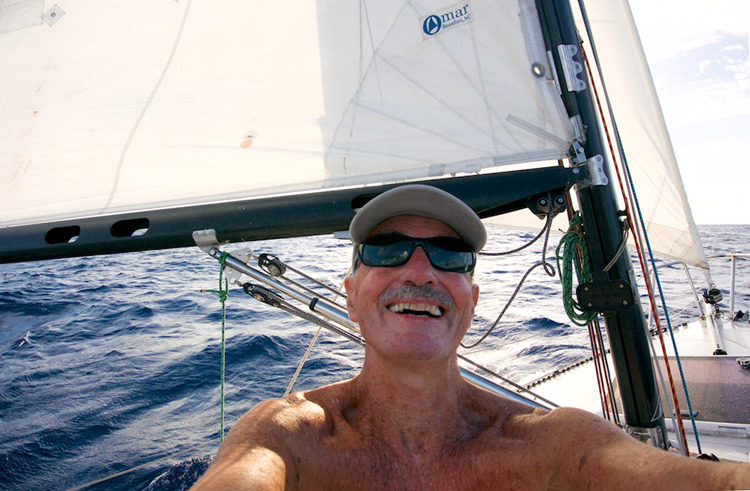
The sea is not cruel or merciless. We are. The sea is insensate and indifferent. It is what you make of it and yourself. If a sailor is an artist whose medium is the wind, the sea is the canvas, a still — with some exceptions — pristine canvas, though perhaps not for much longer.
I love the beauty of the open ocean. I love not hearing news of greedy billionaires and the stupidity of self-serving politicians. I love that the only sounds I hear at sea are the wind, the water, and the music I choose to play. I love feeling my boat move in perfect balance through waves. I love having the clear-cut responsibility for myself and my actions.
Long ago I wrote, “Define a man, then, by that against which he must strive.”
When I was young I looked around and saw that the biggest thing on this planet is the ocean. So it has been that against which I have chosen to strive and be defined.
That is perhaps sailing’s greatest freedom of all: the freedom to be myself.
I don’t know if I have answered the question “Why?” but I have done my best, and if you don’t understand now, you never will.
Take a moment. Listen. Do you hear music?
Great Value on a Tiburon Condo
Tiburon 2 Bed/1 Bath Condo for Sale: A Great Value at $739,000
Interest rates have dropped too, making this home more affordable than ever.
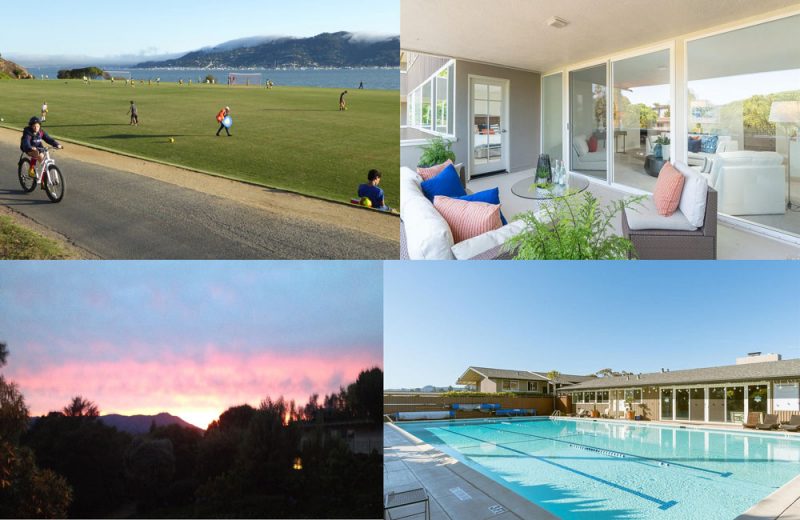
Open House This Sunday, November 10, and next Sunday, November 17, 2-4 p.m.: 10 Andrew Drive #60
- Easy drive to 3 yacht clubs/marinas on the Tiburon Peninsula.
- New paint and carpet.
- Upgraded dual-pane windows, slider.
- Silestone kitchen counters; upgraded drawer fronts & cupboard doors.
- Lots of storage.
- Living room & master bedroom open to a large private deck.
- View of Mt. Tam from master bedroom.
- In-unit high-efficiency washer/dryer, plus coin-op laundry room.
- 1 reserved carport space w/additional open parking; spacious storage room.
- Large community pool and pleasant pool/picnic area.
- Excellent Reed District schools.
- Close to Cove Shopping Center, Blackie’s Pasture, bike path, Ring Mountain trails, Richardson Bay waterfront.
- Convenient location, quick access to 101, bus and shuttle to the Tiburon ferry.
- Must be owner-occupied for at least 2 years.
- Available now. $739,000. Tiburon Hill Estates. HOA dues $482.
View at www.cbone.me/node/1274125
Contact Michelle Steinhart, Coldwell Banker
[email protected], (415) 531-1384
Cal RE #00957034

